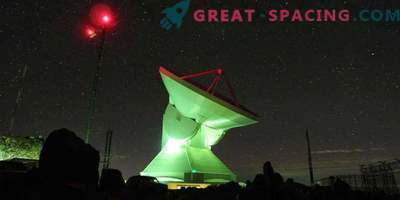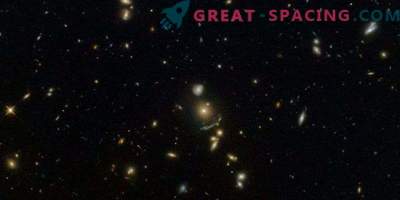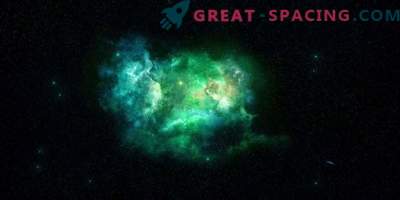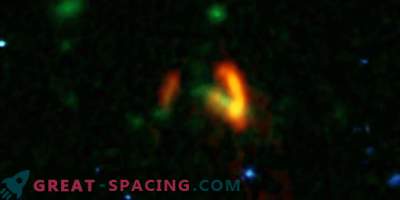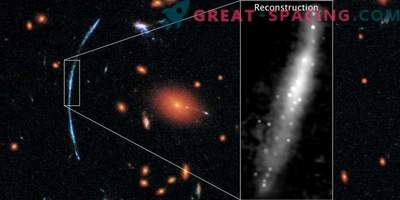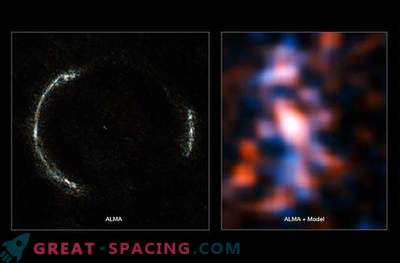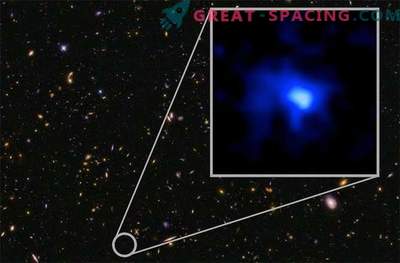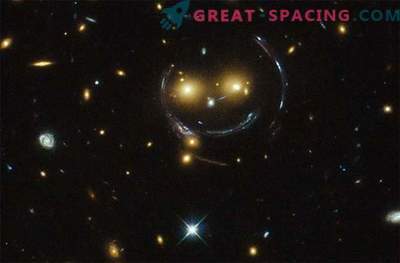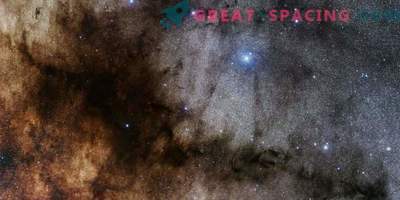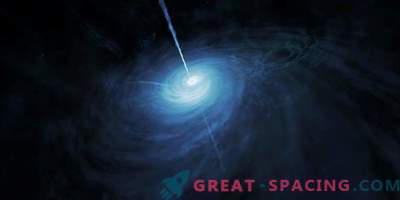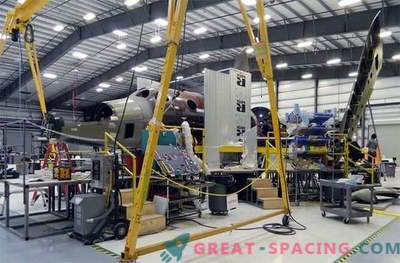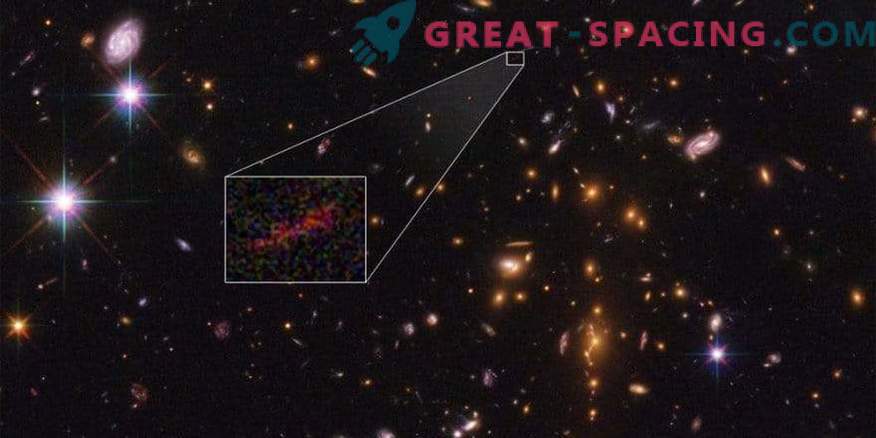
This is an image of the most distant galaxy taken by the Hubble Space Telescope. It is stretched and strengthened due to the effect of gravitational lensing. The embryonic galaxy appeared when the age of space reached only 500 million years. At this time, other primitive galaxies were also noticed, but they looked like red dots due to their small size and distance. But in this case, the “lens” SPT-CL J0615-5746 helped, which increased the light from the background galaxy and blurred the image on the arc (approximately 2 arc-seconds). The mass of the galaxy - 3 billion solar. It is pulled out for 2500 light years and is considered a prototype of young galaxies that appeared shortly after the Big Bang.
An intensive study of the deep space with the Hubble and Spitzer telescopes helped to find the most distant galaxy captured in an image with the participation of gravitational lensing.
The embryonic galaxy SPT0615-JD was seen in the period when the universe was only 500 million years old. Of course, in this epoch other galaxies were also found, but because of their tiny size and great distance, they seemed to be just red dots. But here in the foreground stood another galaxy, which played the role of a gravitational lens. It has never been possible to find a galaxy at such a distance. Analyzing the effects of gravitational lensing, one can determine its actual size and shape. Albert Einstein wrote about the deformation of space by the gravity of a massive object in the foreground. Now scientists use this phenomenon as a natural magnifying glass.
SPT0615-JD appeared in the review of the project RELICS with the participation of Hubble and Spitzer. This project is specifically designed to search for distant galaxies. Thus, it was possible to find 41 massive galactic clusters in the infrared range of Hubble. One of them was SPT-CL J0615-5746.
By combining the information of Hubble and Spitzer, the researchers determined the time of the reverse observation - 13.3 billion years. A preliminary analysis shows that the mass of the galaxy reaches 3 billion solar, and stretches for 2500 light years (half the size of the Small Magellanic Cloud).
This is an amazing galaxy, for which they plan to observe the future telescope of James Webb. With its study, star populations can be resolved in the earliest space.
